
Riva degli Schiavoni is a coastal street, the most beautiful and popular promenade in Venice, with palaces, architectural monuments, bridges and a monument to Victor Immanuel II.
The area is known as the Schiavoni Embankment or Slavyanskaya Embankment.
The embankment was originally built in the 9th century from extracted silt and was narrower than at present. The expansion to its current size was approved in 1780 and ended in 1782, that is, in the last years of the Republic of Venice.
The name "Slavyanskaya" embankment was received from merchants from Dalmatia, who at the time of the Venetian Republic were also called Slavonia or Schiavonia (Slavs). Merchants brought their cargo to Venice via the Adriatic Sea, landed here and also had their own trading counters. At that time, the coast actually formed an integral part of the commercial port of Venice and was of great importance due to its proximity to St. Mark's Square and the center of Venetian political power.
The Schiavoni embankment runs along the St. Mark's Basin (San Marco, Bacino San Marco, Venetian name: Basin de San Marco).
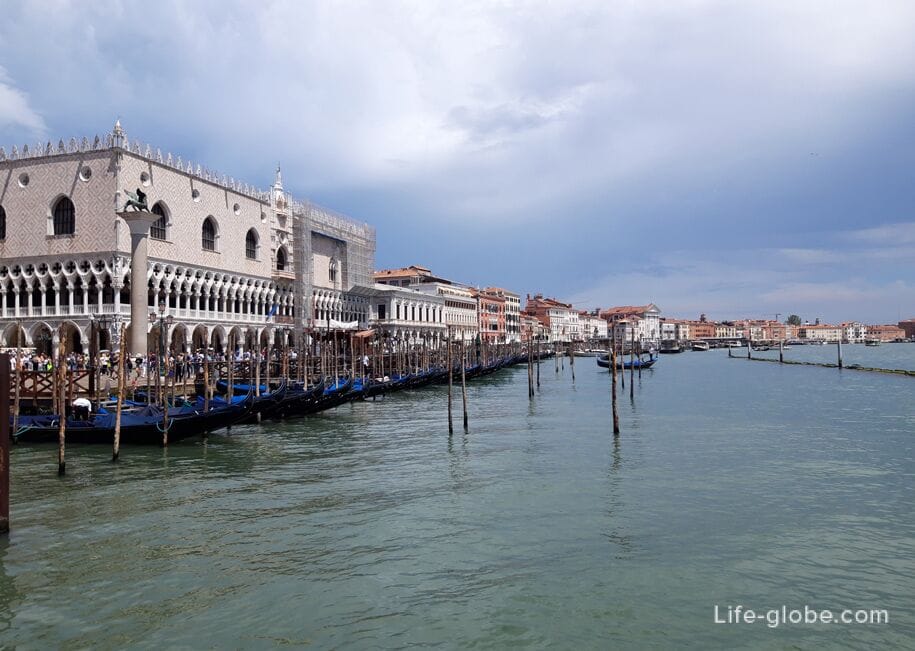

Today, the Riva degli Schiavoni consists of sections connected by pedestrian bridges over the Venetian canals, and is the most beautiful, wide and popular promenade of the island historical part of Venice.
There are stalls on the embankment. On one side of the Slavyanskaya Embankment stretch historical buildings, and on the other stretches the Venetian Lagoon. Cafes, restaurants, shops and accommodation facilities (hotels, apartments) are located in buildings along the embankment
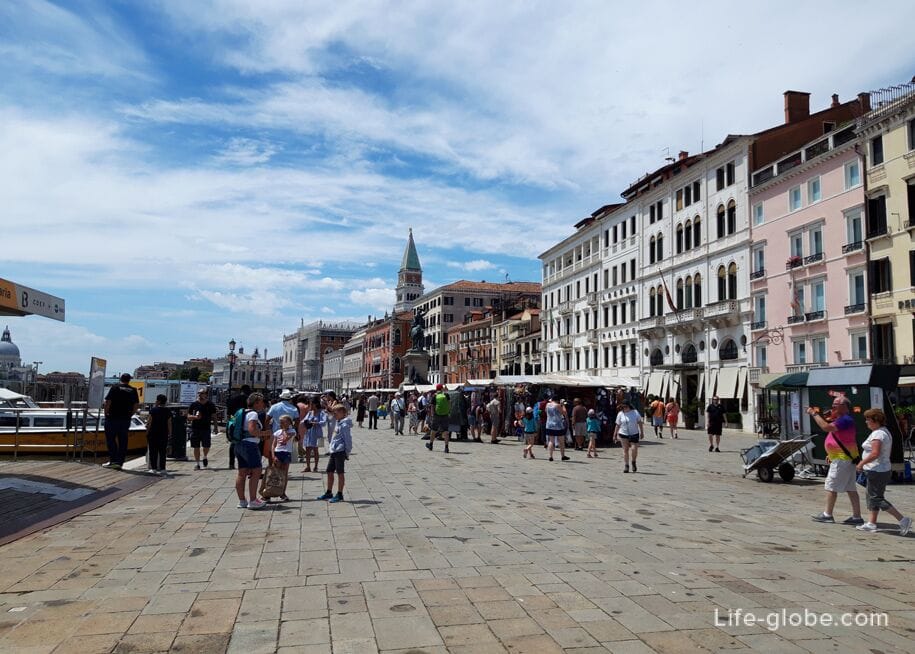
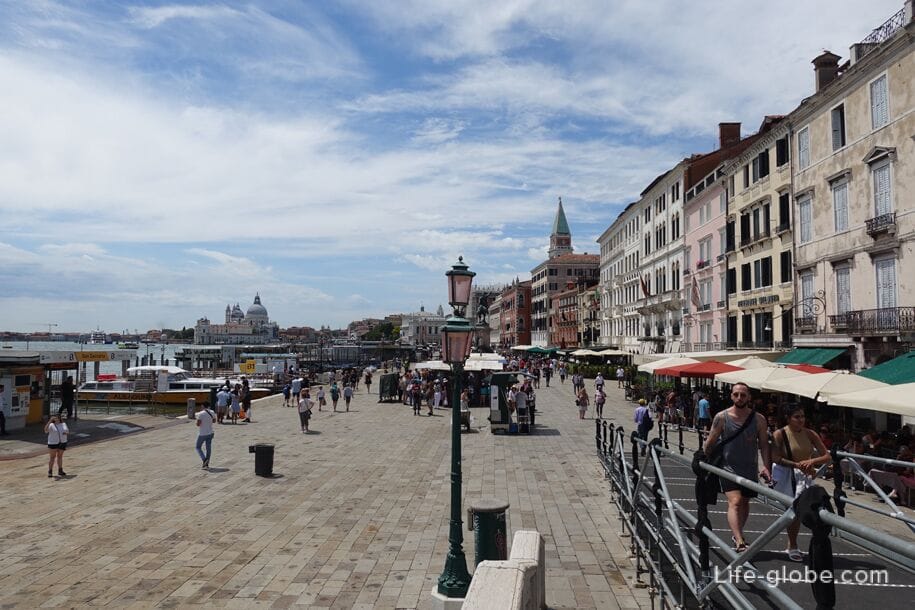
Near the embankment there are ferry berths of water buses (Venetian ferries) that transport people around the islands of the Venetian Lagoon; there are also gondolas and boats.
From the embankment there are wonderful views of the San Marco pool; nearby islands are clearly visible, including the island of San Giorgio Maggiore with the Basilica di San Giorgio Maggiore towering on it, which has an observation deck in the bell tower.

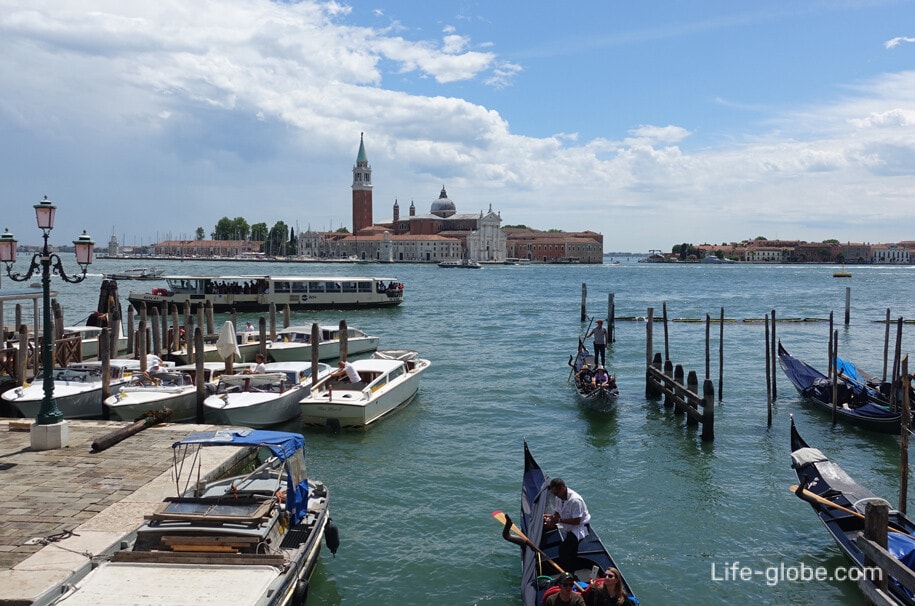

The length of the Slavyanskaya embankment is 650 meters.
The embankment originates from the main square of Venice - San Marco Square, on the corner of which there is a beautiful Doge's Palace (Palazzo Ducale) - the former residence of the Doge (the oldest and highest magistracy of the Venetian Republic) in Venice, which is a masterpiece of Gothic art, which now houses a museum.
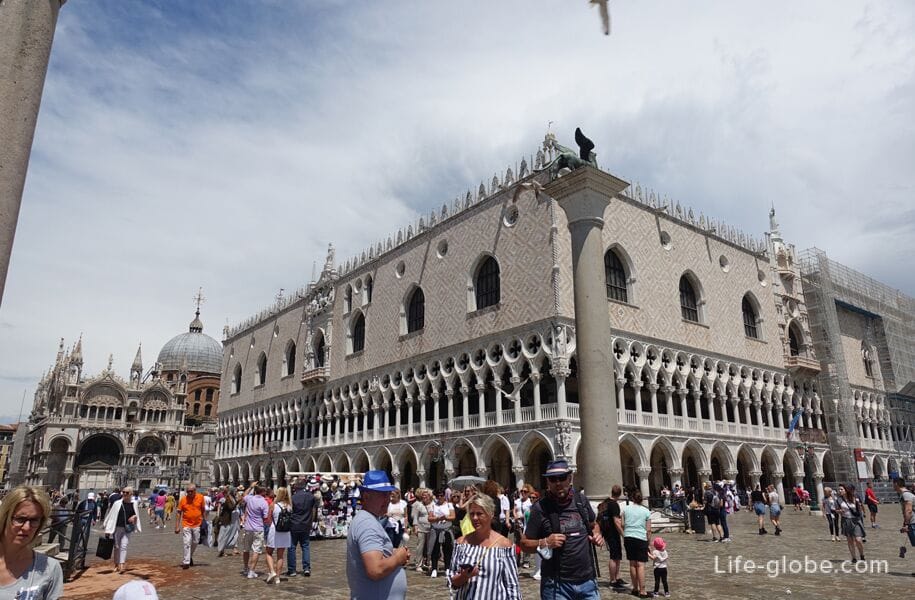
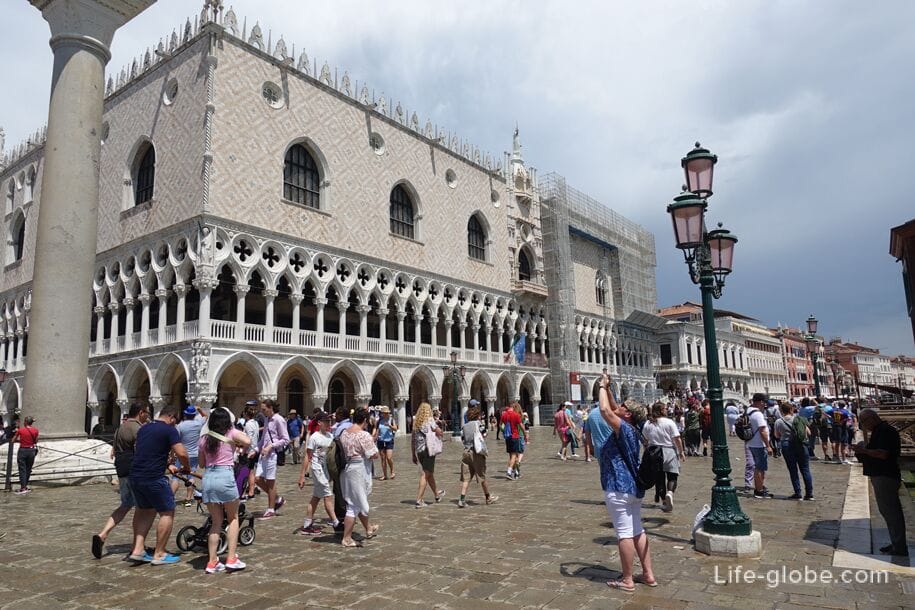
Behind the Doge's Palace, the embankment is made up of a Straw Bridge (Ponte della Paglia, Ponte della Paglia), whose name came from boats once moored here, loaded with straw.
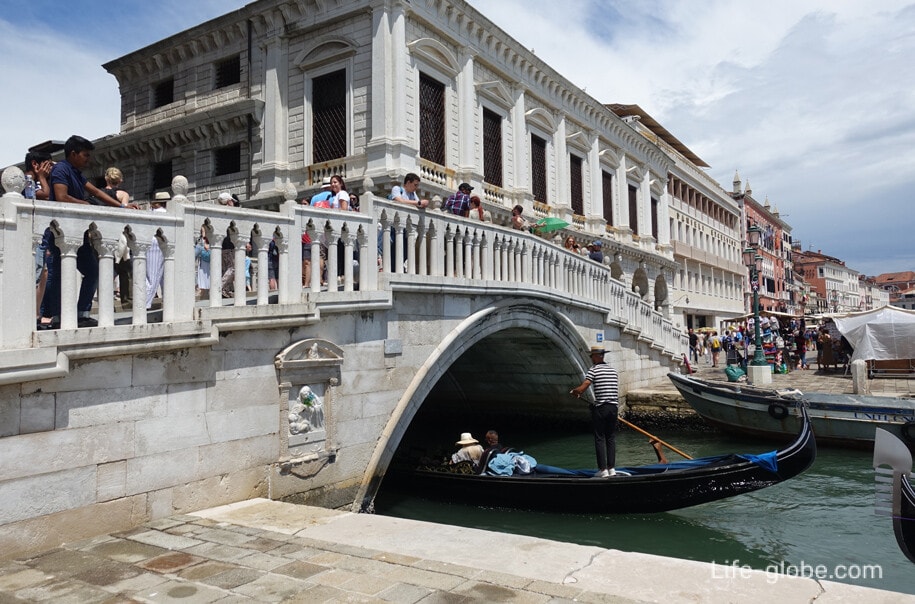
From the Straw Bridge, the Baroque hinged closed bridge of Sighs (Ponte dei Sospiri) is clearly visible, which is thrown over the narrow Palace Canal (Rio del Palazzo, Rio di Palazzo) and, approximately at the level of the third floor, connects two buildings on the banks of the canal - the Doge's Palace with the building of the New Prison (Prigoni Nuove).
You can visit the bridge and the building of the new prison when visiting the Doge's Palace.
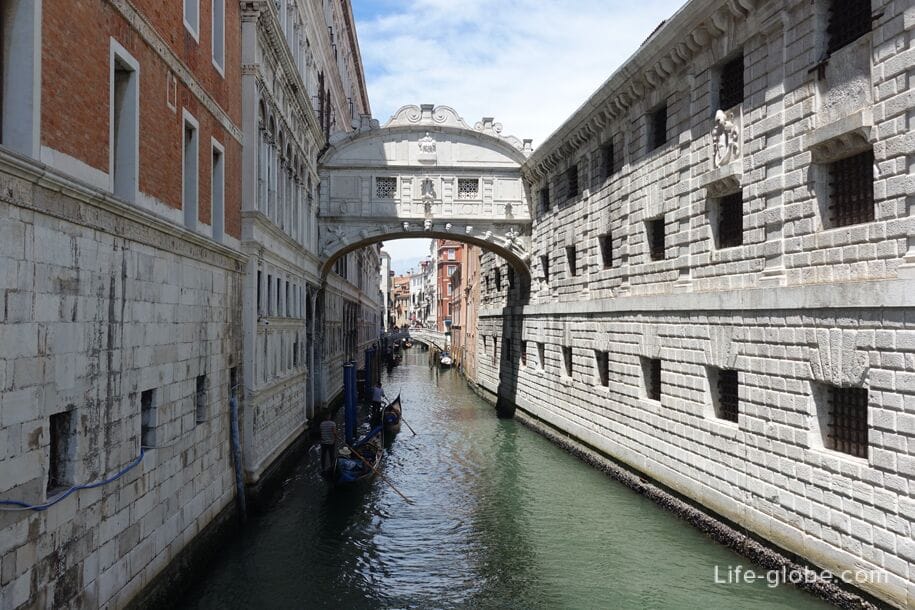
Schiavoni Embankment next

On the embankment, the bright Palazzo Dandolo (Palazzo Dandolo), built for the Dandolo family in the 14th century, is noteworthy. Over the course of its history, the palace has changed owners and various receptions have been held within its walls, including in 1530 the election of the King of Hungary and Bohemia as King of the Romans was celebrated, and in 1629 a wedding reception was held between Giustiniana Mocenigo (belonging to the family that owns the building) and Lorenzo Giustinian. In 1822, the building was bought by Giuseppe Dal Niel, known as Danieli, who turned it into a hotel. Then, according to the project of the architect Tranquillo Orsi, an important restoration was carried out, which changed the style of the interior, making it Neo-Gothic. The facade of the building has a Gothic look with elegant architectural decorations.
Today, the former important Venetian palace houses one of the best hotels in Venice, which was visited by famous people and European rulers. This 5-star Danieli Hotel, a Luxury Collection Hotel, Venice (Danieli), offers first-class service and views of the Venetian Lagoon.
The hotel consists of 3 separate buildings built in the 14th, 19th and 20th centuries and connected by covered bridges.
The hotel's spacious rooms and suites are beautifully furnished. Breakfast may be included in the room rate. Link to the hotel
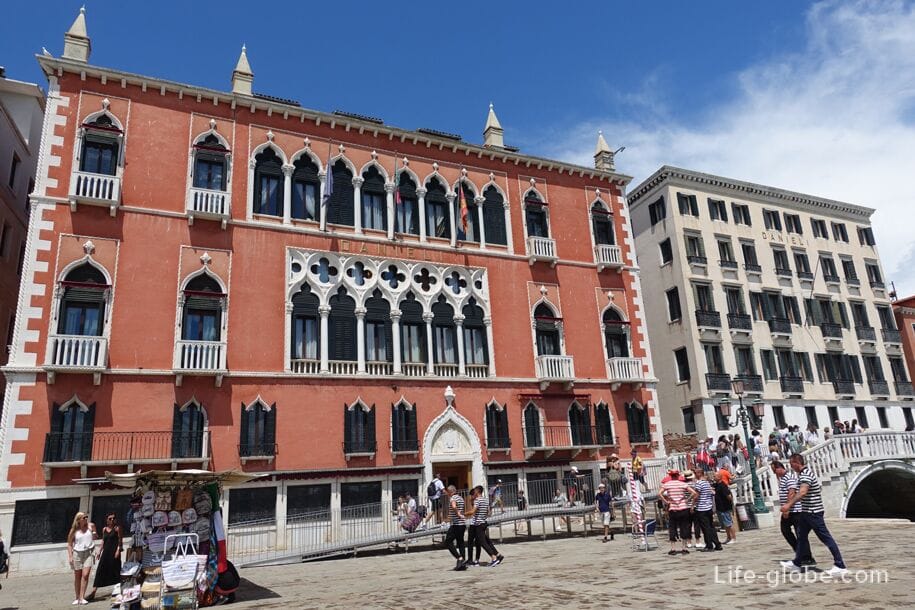

This is followed by the Bridge of Wines (Ponte del Vin), through the canal of the same name del Vin (rio del Vin).
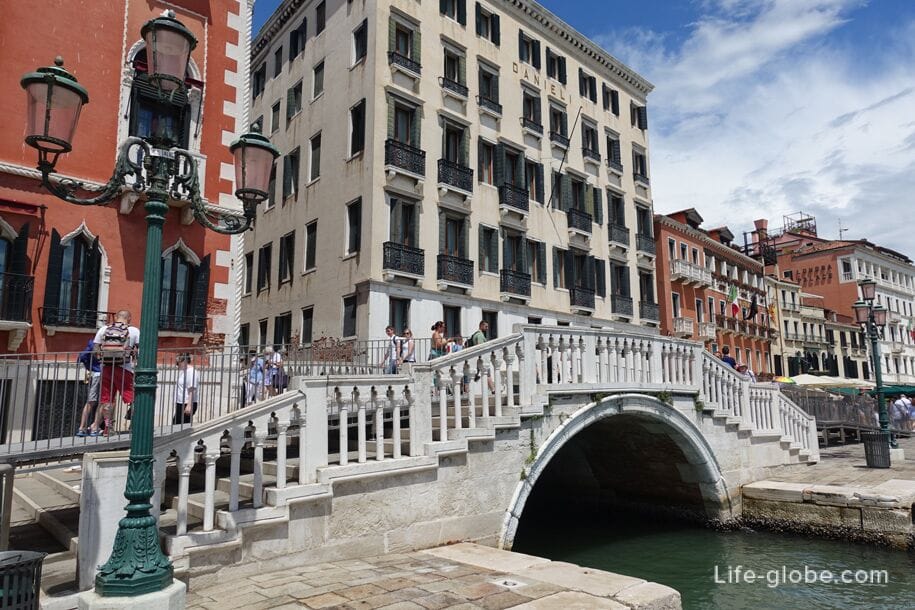
View from mota to the Vin Canal

Riva degli Schiavoni next. There are such hotels as,
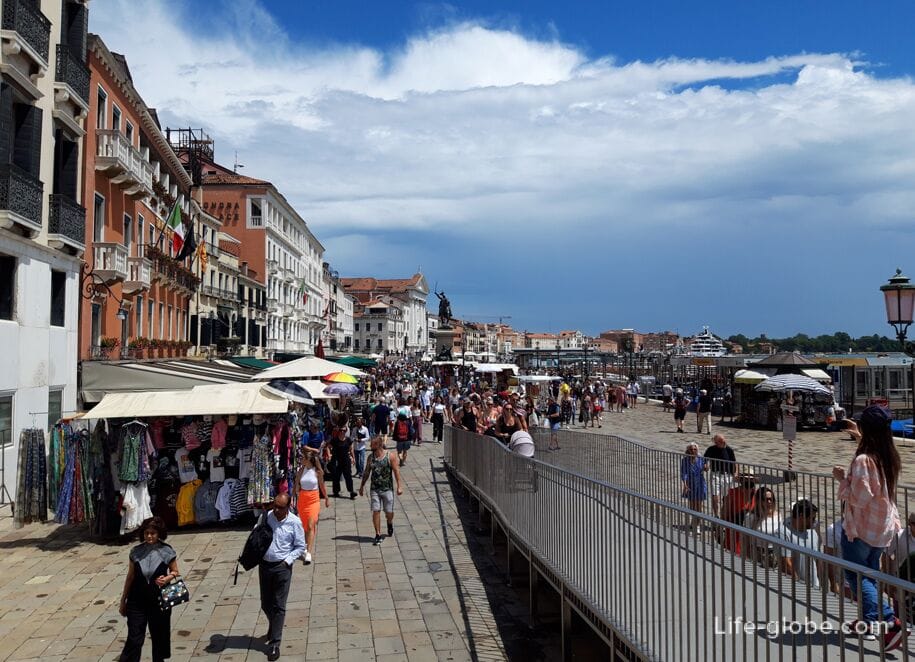
The center of the embankment is decorated with a monumental bronze equestrian monument to Vittorio Emanuele II, made in 1887 by the Italian sculptor Ettore Ferrari.
The monument was created to commemorate the tenth anniversary of the death of the first King of the Kingdom of Italy, Vittorio Emanuele II (1820-1878). The monument was unveiled on May 1, 1887 in the presence of King Umberto I and Queen Margarita of Savoy.
The equestrian statue, cast by Alessandro Nelli, is placed on a base of pink Baveno granite and Istrian stone and depicts Vittorio Emanuele II riding a horse with a drawn sword, inciting to battle.
At the foot of the monument, in a frontal position, there are two allegories of the city:
- on the front side there is a seated woman personifying the "triumph of Venice", proud of her newfound freedom, with her left arm outstretched and a sword in her right hand, surrounded by a roaring March lion, which, breaking the Vienna Treaty of 1815, puts its left front paw on the board with the results of the elections of the Venetian plebiscite of 1866, placed, in turn, on a book with the traditional inscription "Pax Tibi". Marse / Evangelist Meus";
- the reverse side also depicts a seated female figure, but personifying the "Conquered Venice", beaten and imprisoned after the defeat suffered by the young Republic of San Marco (1848-1849), holding a broken sword, and at her feet a conquered lion biting the imposed chains of Austria.
On the sides of the pedestal there are two high reliefs representing two scenes of the Risorgimento (Italian Republic):
- on the one hand, the famous Battle of Palestro, which took place on May 30 and 31, 1859, during the Second Italian War of Independence, the first victory of the Franco-Piedmontese army over the Austrian troops; the shield of the crusaders of the House of Savoy is placed on the steps below;
- on the other hand, the triumphal entry of Vittorio Emanuele II into Venice, finally liberated from Austrian rule, which took place on November 7, 1866, after the Venetian plebiscite on October 21-22, 1866; on the steps below is a shield with the symbols of Rome (Capitoline Wolf and the initials SPQR).
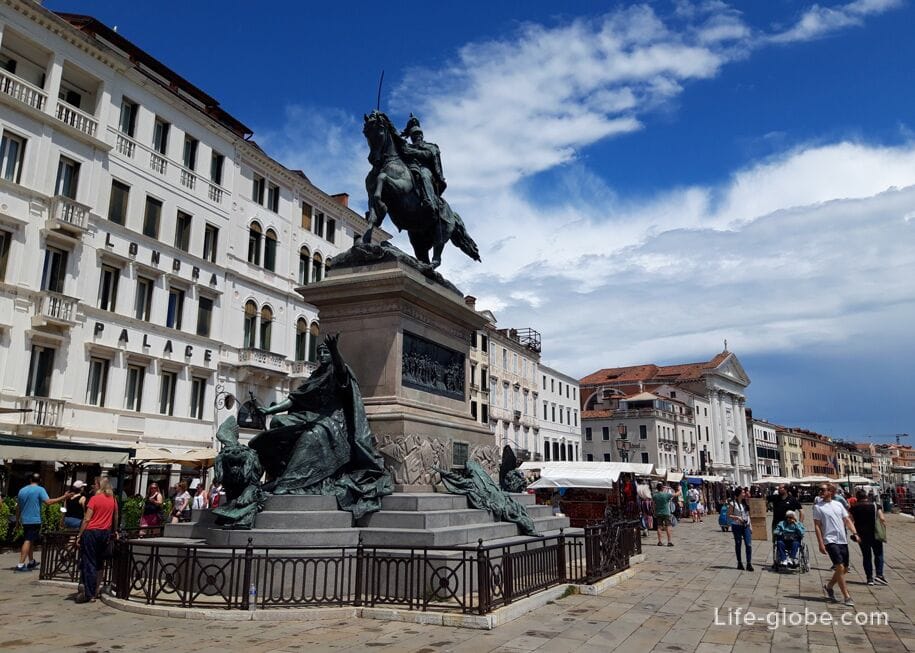
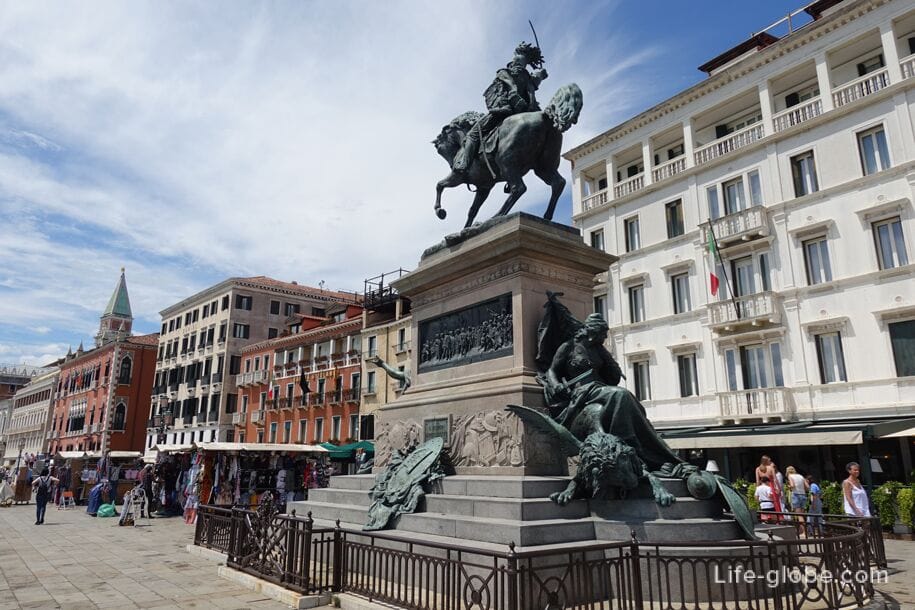
The Pieta Bridge (Ponte de la Pieta, Ponte de la Pieta) over the Greci Canal (rio dei Greci, Rio dei Greci).
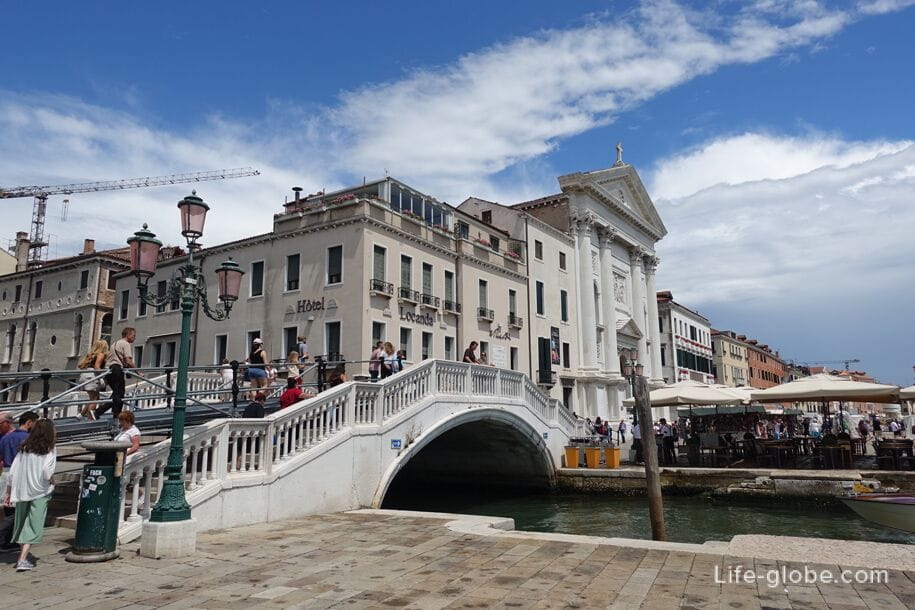
View from the Pieta Bridge to the Greci Canal; the bell tower of the Church of San Giorgio dei Greci (Chiesa di San Giorgio dei Greci) is visible
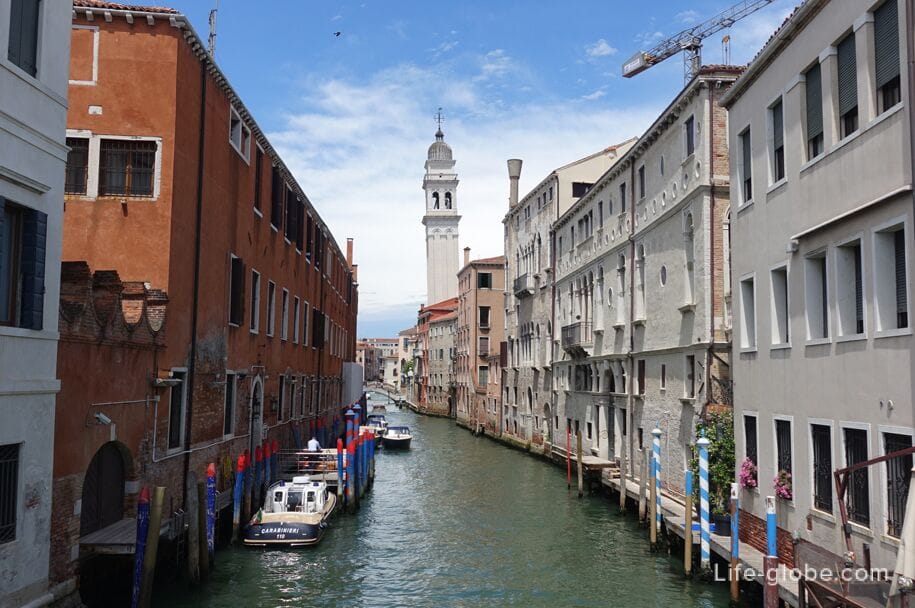
There are two hotels located behind the bridge, on an unoccupied stretch of the embankment (up to the next bridge)
5-star Hotel Metropole Venezia
and the Church of La Pieta or Santa Maria della Visitazione (Chiesa della Pietà - Santa Maria della Visitazione).
The present church was built between 1745 and 1760 by Giorgio Massari (1687-1766). The facade, however, remained unfinished until the beginning of the 20th century.
The church got its name "Pieta" from the fact that it is located next to an old orphanage located on Calle della Pieta (Calle de la Pietà). There is a plaque on the church from 1548 that threatens curses and excommunications imposed by God himself to all those who abandoned their children at the nearby Pieta orphanage if they had the means to support them.
The interior of the church has an egg-shaped plan. The ceiling is decorated with a fresco by the Italian painter Giambattista Tiepolo "Fortress and Peace". The marble altar of the main chapel of the eighteenth century is characterized by a rich Baroque tabernacle surrounded by gilded bronze figures made by Giovanni Maria Morlaiter (Archangels Gabriel and Michael), Antonio Guy (San Marco) and Giovanni Marchiori (San Pietro). In the right altar there is an altarpiece of the Virgin with a Putto and four saints, made by Francesco Daggiu from the school of Giovanni Battista Piazzetta. Also from the Piazzetta school there is an altarpiece of the second altar, San Spiridione makes water flow from the flame by Domenico Maggiotto. There are paintings by Italian artists in the church.
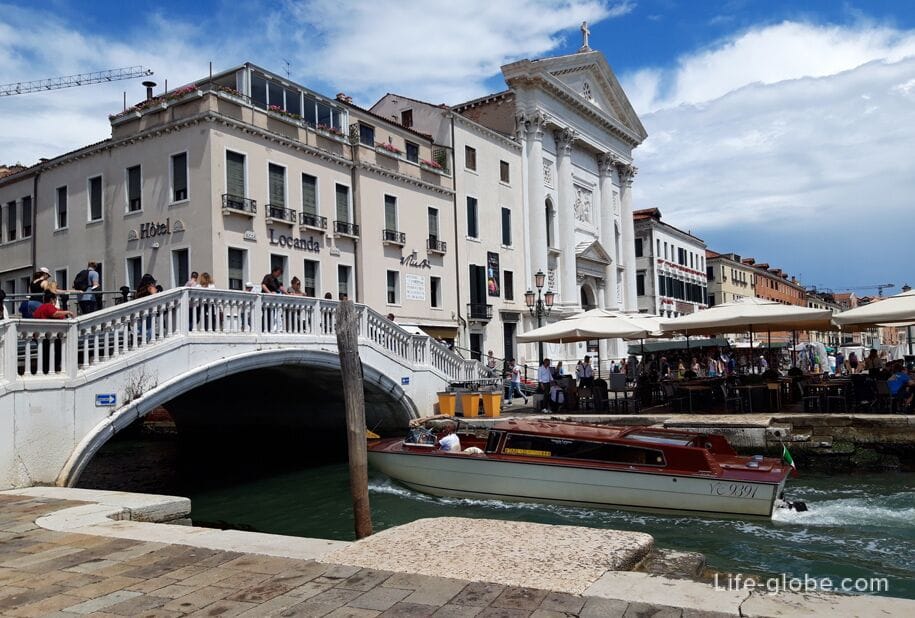
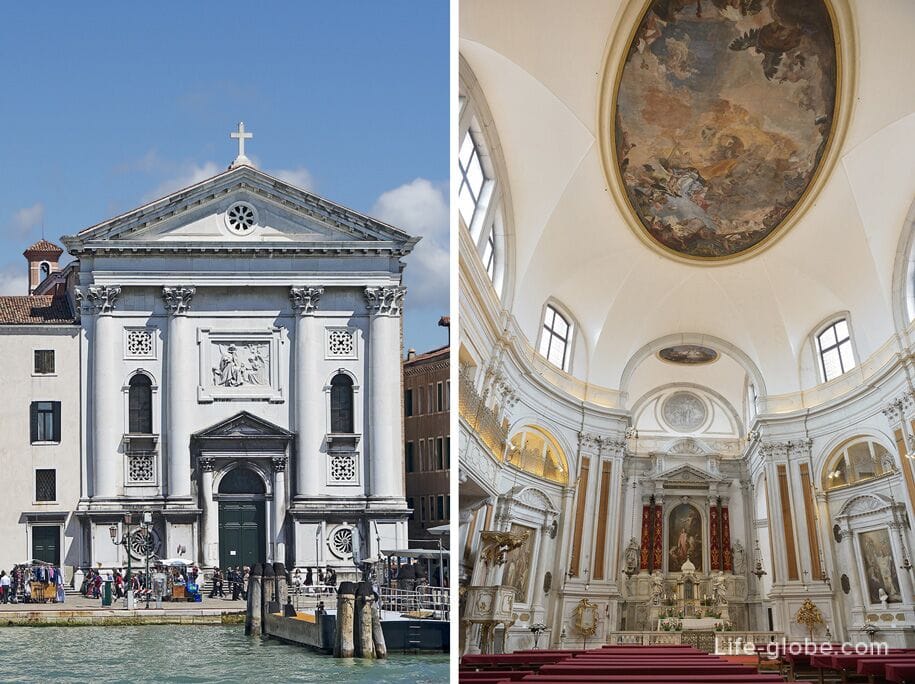
The Bridge of the Holy Sepulchre (Ponte del Sepolcro) over the Pleta Canal (rio de la Pleta).
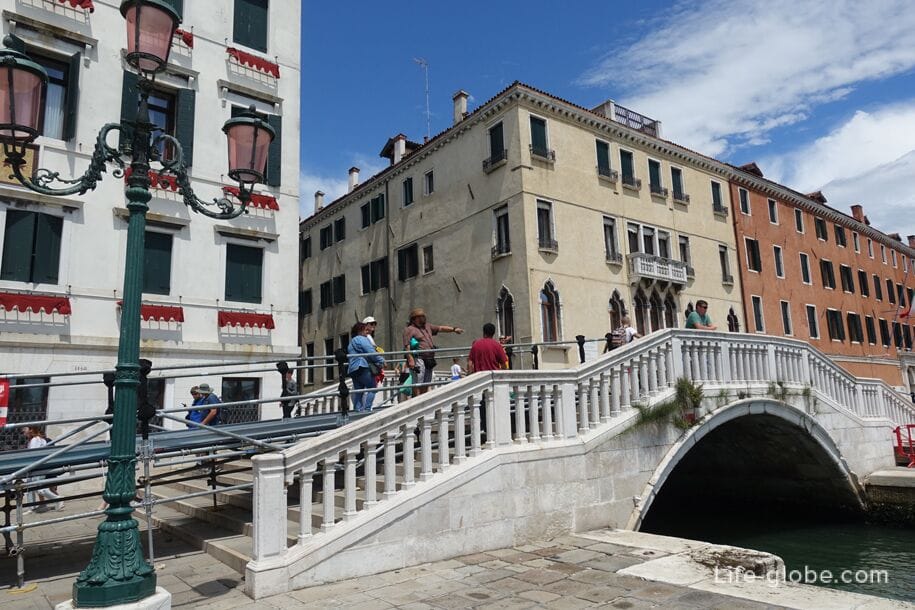
View from mota to the Pleta Canal

Schiavoni Embankment next. Here, among the buildings, the former Palazzo Gabrielli (palazzo Gabrielli), which now houses the hotel of the same name, is particularly noteworthy.


View of a narrow street from the Slavyanskaya embankment
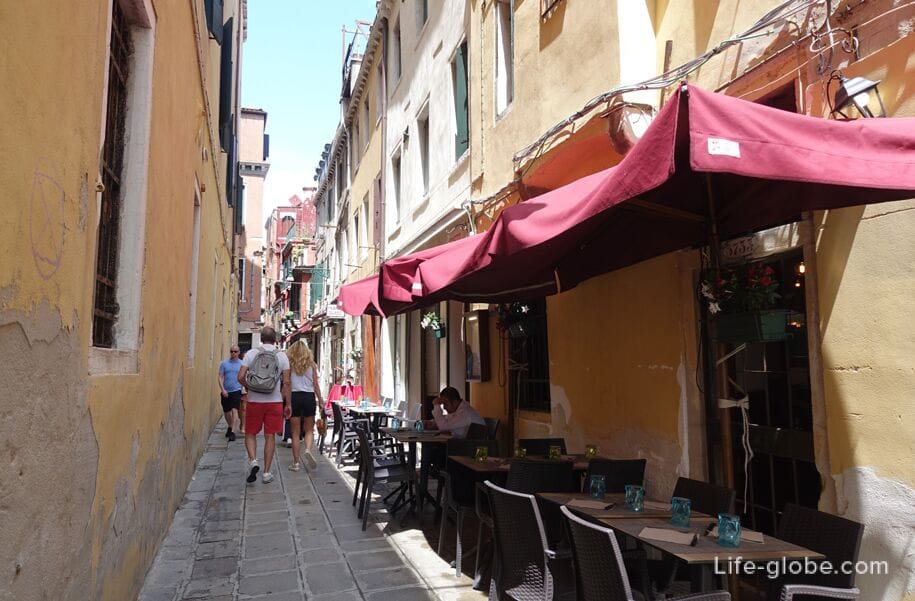
Next is the Ca'di Dio Bridge (ponte della Ca' di Dio) across the Carita Canal (rio de la Carita), which marks the end of the Riva degli Schiavoni embankment.
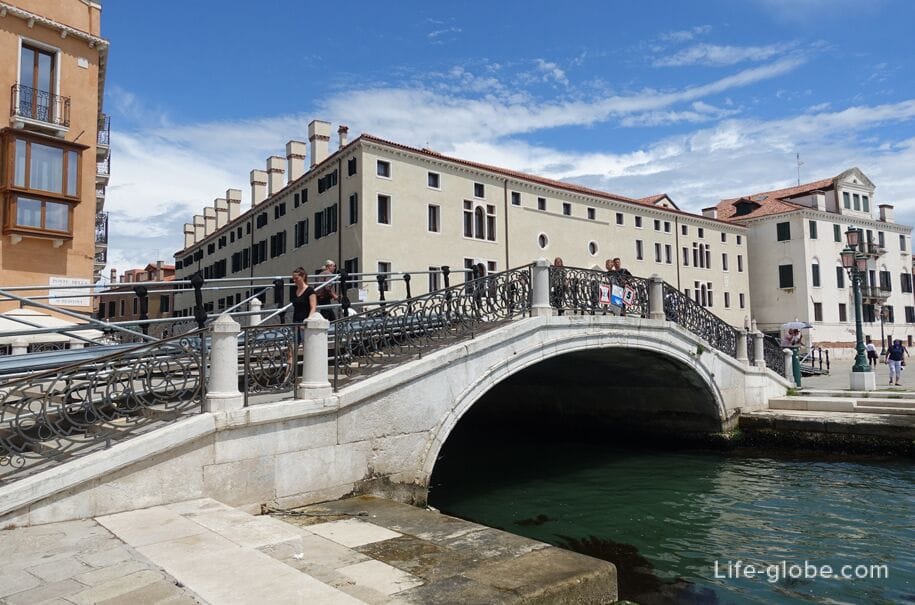
View from mota to the Karita Canal
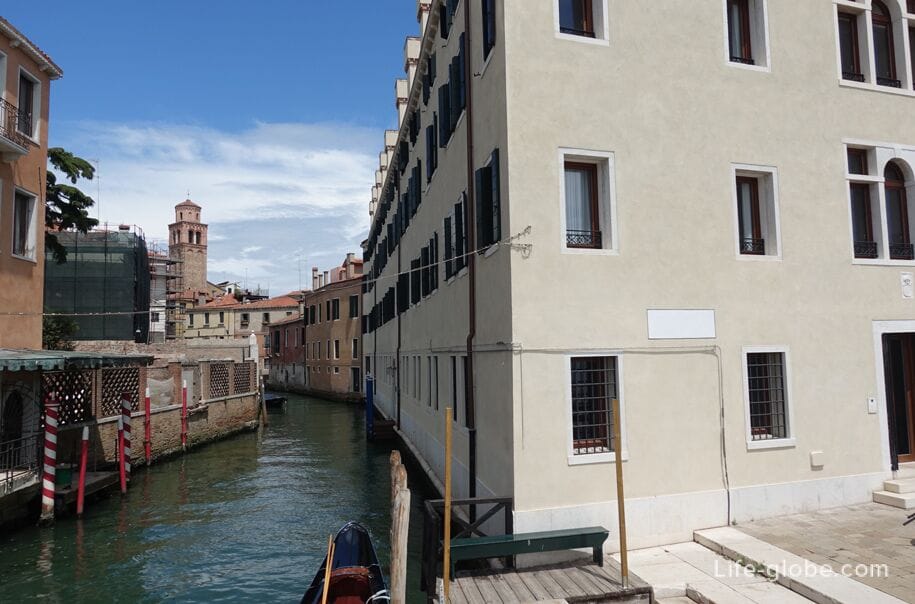
Next lies the embankment of the Ca'di Dio (Riva Ca' di Dio) along which it is interesting to walk to the bridge of San Biasio delle Catene (Ponte San Biasio delle Catene), which offers a beautiful view of the Arsenal Canal, where the Arsenal of Venice or the Venetian Arsenal (Arsenale di Venezia) is located - a historical complex of shipyards and workshops, thanks to which the Republic of Venice could fight the Ottomans in the Aegean Sea, and conquer the routes of Europe.
Part of the arsenal is the Church of San Biagio ai Forni (Chiesa di San Biagio Vescovo) and the Museum of Naval History of Venice (Museo Storico Navale di Venezia). More about the arsenal, museum and church...
Photo of the San Biasio delle Catene Bridge
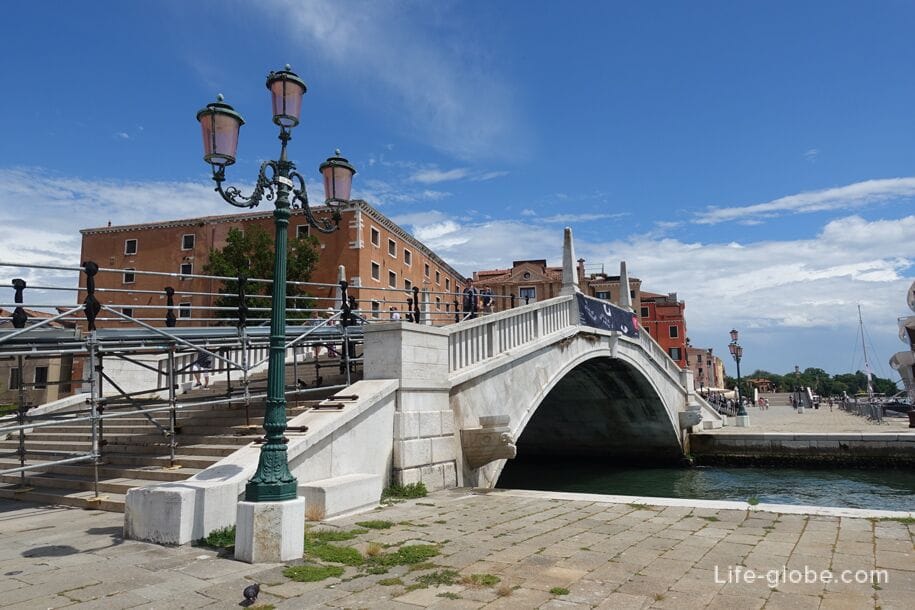
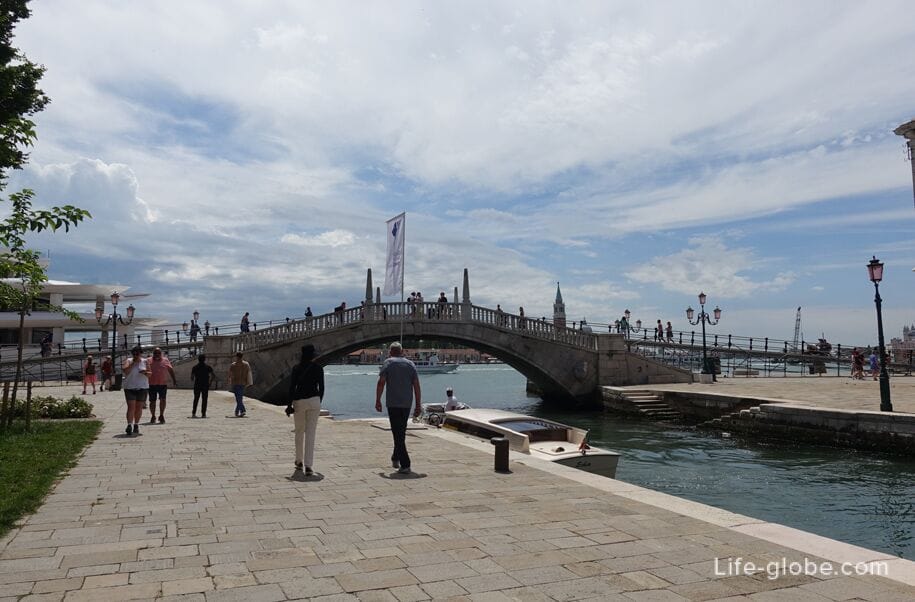
View of the canal and the Arsenal

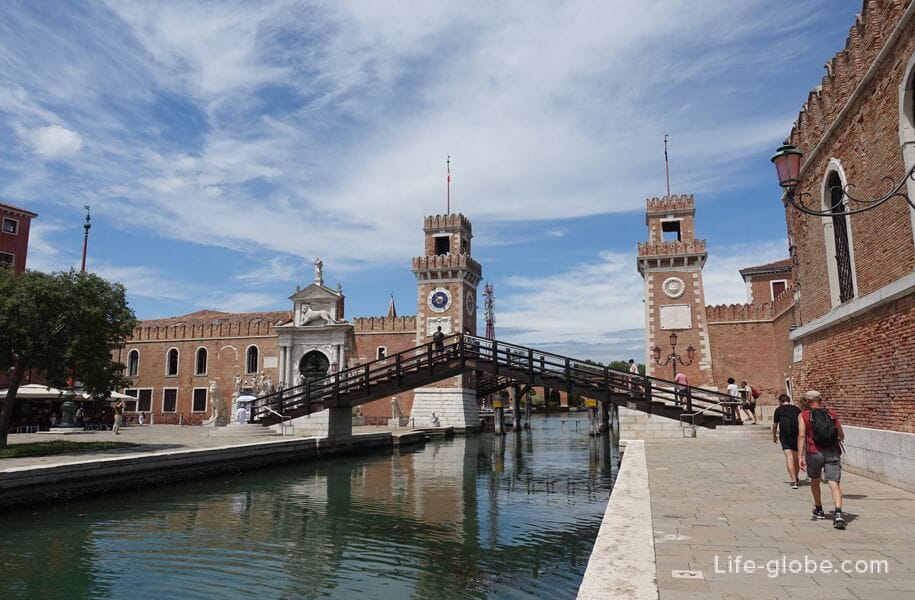
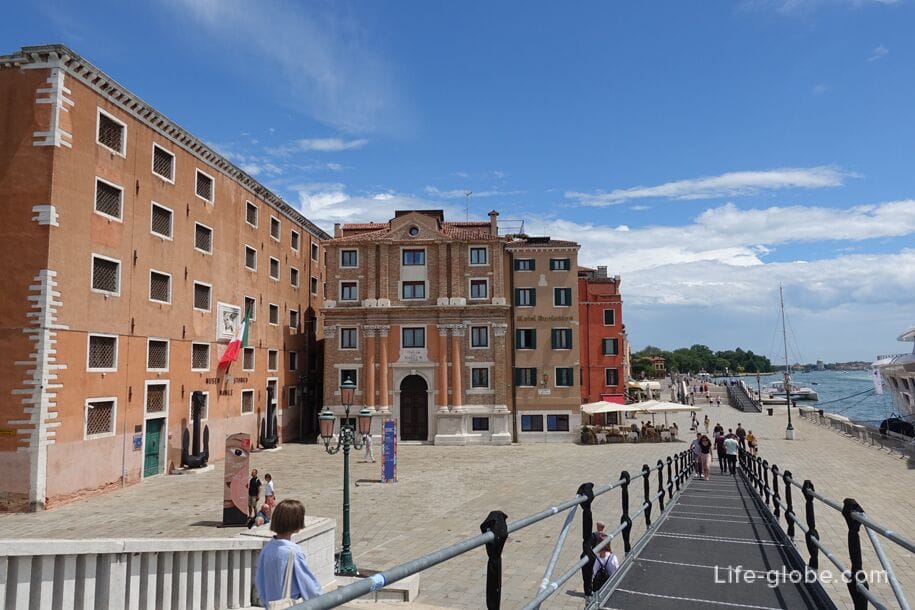
Coordinates of Slavyanskaya Embankment: 45°26'01.9"N 12°20'34.1"E (45.433861, 12.342808).
All accommodation facilities in Venice, including on Slavyanskaya Embankment, in the historical center of the city and more remotely from those, can be viewed and booked here